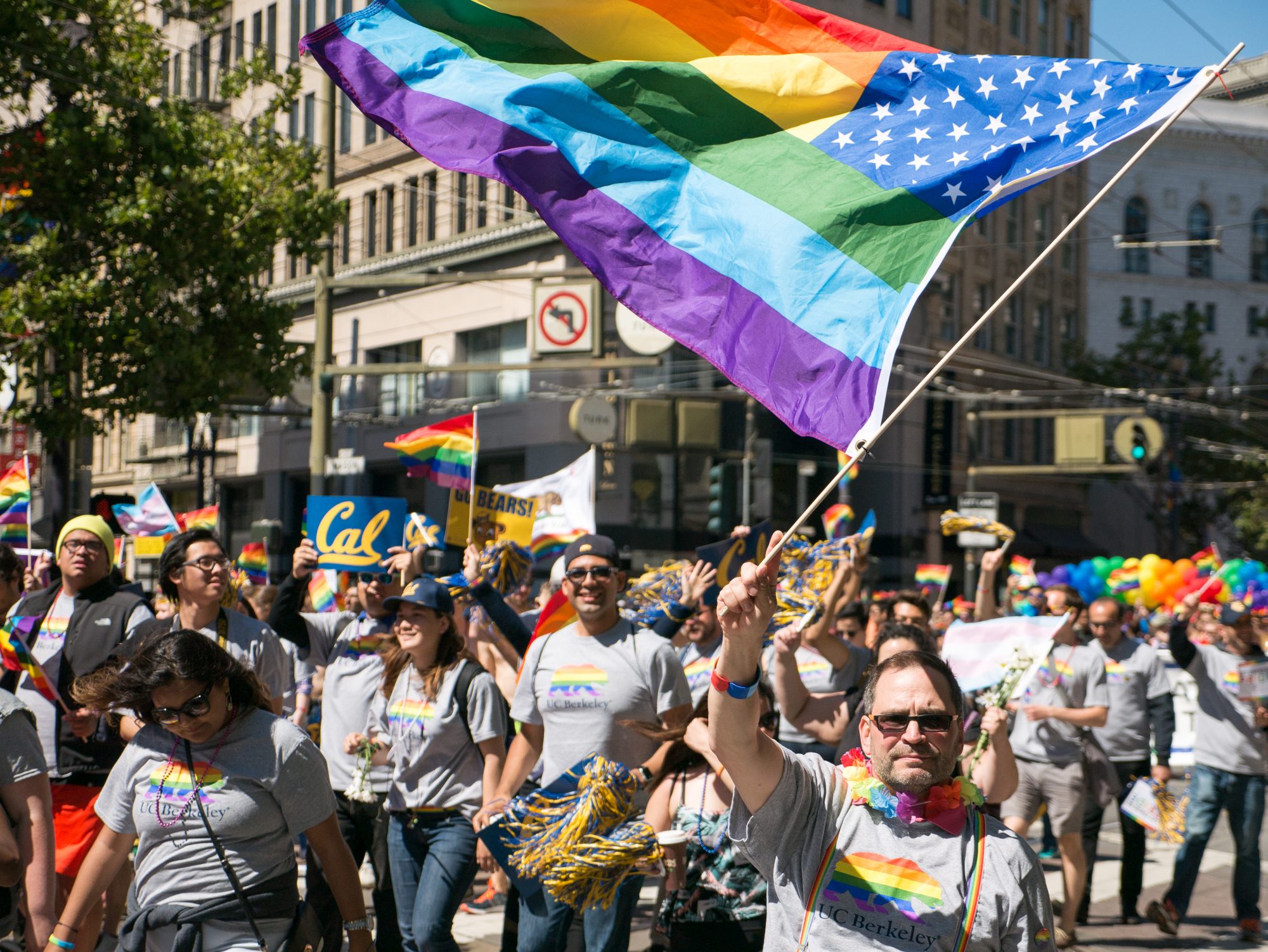Do LGBTQ+ academics still feel pressured to hide their identity in STEM academia, even in 2021?
Many LGBTQ+ academics have expressed that keeping their personal identity private and hidden is extremely important to them.
STEM, an acronym for the fields of science, technology, engineering and math, is generally considered to be a difficult world to navigate. According to a number of surveys undertaken in the last few years, STEM LGBTQ+ academics in the UK and US experience discrimination and exclusion within their workplaces.
With 28% of LGBT+ people having at some point considered leaving their jobs because of a hostile workplace or discrimination, something needs to change. [1]
“28% of LGBTQ+ people have at some point considered leaving their jobs because of a hostile workplace or discrimination towards them.”
How are STEM careers creating hostility for LGBTQ+ employees?
In a piece for the The Biochemist Journal, Karim Boustani from the National Heart and Lung Institute, Imperial College London, explored the ways in which LGBTQ+ discrimination has affected his career and well-being in a STEM workplace. He explains that “heteronormative attitudes prevail in science and academia” and the ways in which having to justify being LGBTQ in the workplace can be harmful.
Boustani points out that careers in STEM industries tend to place a higher value on workplace contribution and less on personal identity, stating that employees “are routinely told that you are defined by the work you do, and it is almost exclusively this individual work that gains you academic merit.” [2]
This attitude is one that STEM environments have adopted, however it overlooks the possibilities of collaborative work – along with the benefits that a diverse and open workforce can offer research and innovation. Currently, the workplace climate surrounding STEM jobs can limit the power of a diverse and open workforce. Creativity is a key element of discovery. The existing climate in STEM jobs can breed uncomfortable, negative and discriminatory attitudes towards those who identify as LGBTQ+.
Boustani also says that in a rigid workplace atmosphere, “everyone is generally assumed to be straight or cisgender”- meaning there is a necessity for employees to “come out” when introduced to a new person or starting a new job. The breaking of expectations puts a strain on mental well-being. He said: “This barrier can often make it difficult to come out in the first place.” [3]
LGBTQ+ people 30% more likely to undergo workplace discrimination
Clearly there is still a long way to go in order to protect LGBTQ+ individuals in all aspects of their lives, especially the workplace. STEM professions have dragged behind in the diversification process of the last few decades. Science, technology, engineering and mathematics are fields that are still predominantly control by heterosexual cis-gendered males and are severely lacking in diversity.
‘LGBTQ STEM professionals were also about 30% more likely than their non-LGBTQ peers to have experienced harassment at work in the past year’ as of 2021.
The study ‘Systemic inequalities for LGBTQ professionals in STEM’ published January 2021 in Science Advances Journal, points out that “more diverse groups of problem solvers offer more creative, productive and fact-based scientific and technical innovations than more homogeneous teams.” This observation further highlights the importance of greater diversity and acceptance within STEM fields.
Recording personal accounts of 25,324 STEM participants, with 1,006 of them identifying as LGBTQ+, the study revealed a number of striking statistics and personal experiences.
The study looked at professional inequalities along five dimensions:
- Career opportunities;
- Professional devaluation;
- Social exclusion;
- Health and wellness difficulties;
- And intentions to leave STEM.
The report found that “LGBTQ professionals were 20.2% more likely than their non-LGBTQ peers to agree that they had experienced at least one of the five’ forms of discrimination listed above.” [4]
Even in the twenty-first century, many LGBTQ+ individuals reported feeling “invisible” within their STEM field and that they were encouraged to keep their personal lives to themselves. Some individuals stated that they felt isolated: “I can’t talk much about my LGBT+ experiences.” We can see how in a working environment such as this, attitudes towards LGBTQ+ academics can become negative.[5]
With employees being encouraged to hide a key part of their identities, the connection between the LGBTQ+ community and shame is being reinforced.
“I can’t talk much about my LGBT+ experiences”
Environments of shame breed hostile attitudes, whether conscious or subconscious, towards the LGBTQ+ community. With that comes an increased risk of discrimination from other employees, and an increasingly exclusionary environment.
An exclusionary environment?
Fast paced and high pressure working environments such as STEM are described to have an exclusionary environment. An exclusionary environment is a workplace that does not make all of its employees feel safe and respected by executives and co-workers.
An exclusionary environment can be one that includes:
- Workplace policies and procedures that don’t adequately support employees that are not heterosexual and cisgender
- Incorrect use of pronouns to address or refer to LGBT+ employee
- Casual insensitive humour, even when not maliciously intended
These environments do not make an effort to support the different gender identities and sexualities that exist within society. A continued effort to create and equal and fair working environment is required in order to ensure a higher quality of life for LGBTQ+ people in STEM.

Changes matter
As of 2017, November 18 is the International Day of LGBTQIA+ People in STEM, which is an incredibly important event in raising the voices of those who in many working environments are not given a suitable platform to share their experiences. Surveys and investigations such as the ones listed below are a crucial step in understanding the current situation and ensuring a more diverse and safe environment for those who work in STEM careers in the future.
A positive change that has been seen across workplaces is the introduction of pronouns on ID badges and name tags.
This is a change that STEM environments could benefit from greatly, this would be a subtle change that allows the LGBTQ+ community to be more comfortable and ensures that employees are being identified in the way they desire – without the need to “come out” continuously.
E.A. Cech, at the Department of Sociology, University of Michigan, wrote that: “Differential treatment in STEM work gets “under the skin” of LGBTQ-identifying STEM professionals to affect them not only in professional but also in deeply personal ways.” [6]
A continued effort to create and equal and fair working environment is required in order to ensure a higher quality of life for LGBTQ+ people in STEM.
References:
- https://prideinstem.org/lgbtstemday/
- https://portlandpress.com/biochemist/article/42/3/16/225203/Navigating-LGBTQ-discrimination-in-academia-where
- https://portlandpress.com/biochemist/article/42/3/16/225203/Navigating-LGBTQ-discrimination-in-academia-where
- https://www.rsc.org/new-perspectives/talent/lgbt-report/
- https://www.science.org/doi/epdf/10.1126/sciadv.abe0933
- https://www.science.org/doi/10.1126/sciadv.abe0933
Resources:
- https://portlandpress.com/biochemist/article/42/3/16/225203/Navigating-LGBTQ-discrimination-in-academia-where
- https://www.nature.com/articles/d41586-020-02949-3
- https://www.nature.com/articles/d41586-020-02471-6
- https://www.rsc.org/new-perspectives/talent/lgbt-report/
- https://www.science.org/doi/10.1126/sciadv.abe0933











